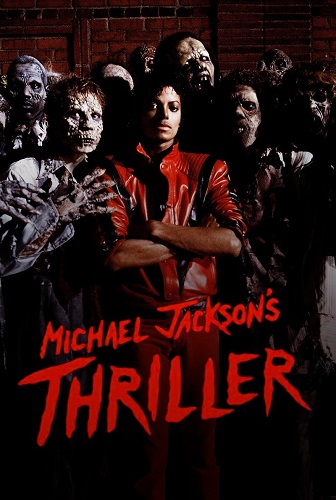 In 1981, MTV was the original start-up: a company whose product didn’t quite exist yet. Despite launching as a 24/7 music television channel, in I Want My MTV: The Uncensored Story of the Music Video Revolution, Craig Marks and Rob Tannenbaum describe how initially the network had only “about a hundred” promotional clips, as the music videos “in inventory, were mostly by marginal or unpopular British or Australian bands.” MTV was forced to go to record labels and ask them to make these videos for free, which they would then go on to screen.
In 1981, MTV was the original start-up: a company whose product didn’t quite exist yet. Despite launching as a 24/7 music television channel, in I Want My MTV: The Uncensored Story of the Music Video Revolution, Craig Marks and Rob Tannenbaum describe how initially the network had only “about a hundred” promotional clips, as the music videos “in inventory, were mostly by marginal or unpopular British or Australian bands.” MTV was forced to go to record labels and ask them to make these videos for free, which they would then go on to screen.Fast forward to the present day. TV is in decline and it’s taking MTV along with it – in 2015, Nielsen Data suggested the channel had lost 40% of their 12-34 year old audience in the previous five years. But let’s be clear, this doesn’t mean young people’s appetite for videos has waned – a report from 2015 found that millennials spend most time online watching videos (admittedly this is tied with their other #1 favourite activity – spending time on social media). Meanwhile a lot has changed since the 1980s, including the prestige factor of music videos – heavyweight directors are more and more eager to get involved in the industry, while the technological advances offered by the internet means music videos are increasingly experimental.
Pre MTV
Before Beyoncé, there were The Beatles. Just like Beyoncé in 2016, The Beatles were eager to give their fans the fullest audio-visual experience possible, recording promotional clips that could be shown abroad. They also starred in two full-length films, Help! and A Hard Day’s Night. Other bands would follow their lead and also make promotional clips in the ’60s and ’70s. David Bowie was also an early-adopter, releasing the video for “Space Oddity” in 1969. Probably the most significant music video of this era was Queen’s “Bohemian Rhapsody,” which debuted in 1975. When “Bohemian Rhapsody” rocketed to the top of the charts in Britain, the band were on tour and couldn’t perform on the British music show, Top of the Pops.
MTV Launches (1981)
The music video giant launched at 12.01AM Eastern Time on 1 August 1981 with The Buggles’ video, which had first aired two years previously on Top of the Pops in lieu of a live performance. The message of The Buggles’ hit — that advances in technology could pre-empt a cultural shift — proved prescient when the pop artists who created the most talked-about videos began to dominate the musical landscape. This climate of publicity in exchange for great visuals was established by Michael Jackson’s “Thriller” in 1983. Thriller isn’t just a seriously great video. It acts as the origin story for what we recognize as music videos for major artists today: high production values, Hollywood directors and a clear narrative. It was also ludicrously expensive to make in comparison to the other videos of the time — it cost over $500,000 to make at a time when most videos cost in the tens of thousands to produce. The full 13-minute video debuted on MTV as part of an exclusive deal MTV struck with MJ’s team and was played 3-5 times a day, something which increased MTV’s audience tenfold. In 2009, the video was inducted into the National Film Registry of Congress for being “culturally, historically or aesthetically” significant. Despite this coming over 20 years after the video’s initial release, it marked the first time a music video had received this honour.
Decline of MTV
After The Real World launched to insane viewing figures, MTV decided to take a chance on reality TV. They introduced growing numbers of reality TV shows and started phasing out music shows. As I Want My MTV’s Rob Tannenbaum told NPR “It’s very easy to trace the line from The Real World to Snooki…It’s an alcoholic, crooked line all the way there, but MTV quickly realized and learned that narrative television, even reality TV, rated better than music videos.” This meant ultimately that music videos weren't getting the attention they deserved or needed.
Resurgence Of Music Videos (2005–)
 In 2005, former PayPal co-workers Steve Chen, Chad Hurley and Jawed Karim created YouTube, which they initially intended to be a way people could share their home videos with each other. In October 2006, YouTube was acquired by Google and in 2009, Vevo was born. It was the product of debate between Universal Music Group (UMG) and Google over content licensing for YouTube. Vevo meant record labels could actually make money on their videos being streamed — small ads often appear on the bottom of the video as well as links to buy the music you’re listening to. Finally, artists were starting to get the recognition they deserved for their music videos. Thanks to advertising revenue, up and coming artists could start to make a small buck for whatever they were producing, all whilst reaching a broader audience.
In 2005, former PayPal co-workers Steve Chen, Chad Hurley and Jawed Karim created YouTube, which they initially intended to be a way people could share their home videos with each other. In October 2006, YouTube was acquired by Google and in 2009, Vevo was born. It was the product of debate between Universal Music Group (UMG) and Google over content licensing for YouTube. Vevo meant record labels could actually make money on their videos being streamed — small ads often appear on the bottom of the video as well as links to buy the music you’re listening to. Finally, artists were starting to get the recognition they deserved for their music videos. Thanks to advertising revenue, up and coming artists could start to make a small buck for whatever they were producing, all whilst reaching a broader audience.




No comments:
Post a Comment